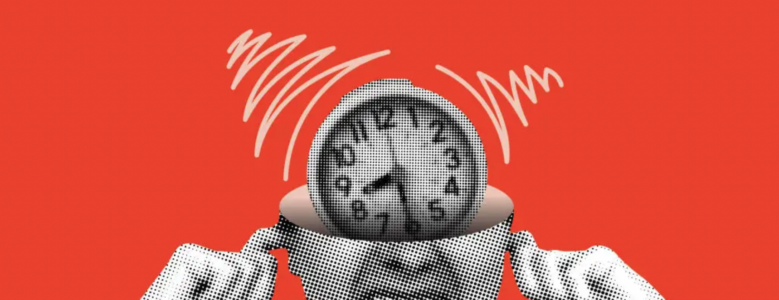How to Sell Your B2B SaaS While Working a Full-Time Job

The Bootstrapper’s Balancing Act
Building and selling a B2B SaaS while holding down a full-time job is one of the hardest but most rewarding challenges a founder can take on. You’re essentially managing two demanding careers at once—one that pays the bills and another that’s your long-term vision.
For many bootstrapped founders, quitting their job too soon isn’t an option. You need income to survive while your SaaS gains traction—but you also need to find time to market, sell, and grow your product.
So, how do you sell your B2B SaaS efficiently when you have limited time, energy, and resources? Let’s break it down.
1. Focus on Outbound Sales with a Structured Approach
Since your time is limited, you can’t afford inefficient sales efforts. Instead, build a structured, repeatable system to reach potential customers.
1.1 Define Your Ideal Customer Profile (ICP)
🔹 Industry & Company Size: What industries need your SaaS? Are you targeting startups, SMBs, or enterprises?
🔹 Decision-Makers: Who has the buying power? (CEO, CTO, Head of Operations, etc.)
🔹 Pain Points: What problem does your product solve that they actively care about?
Having a clear ICP ensures you only reach out to high-potential leads, not random companies.
1.2 Cold Outreach: Targeted & Efficient
Cold outreach is the fastest way to get potential customers—especially when you have limited time.
✅ Build a targeted lead list (use LinkedIn Sales Navigator, Apollo.io, or Crunchbase).
✅ Send personalized cold emails (not generic templates—address their pain points directly).
✅ Leverage warm introductions (ask for intros via LinkedIn or startup communities).
✅ Use LinkedIn DMs (connect and message decision-makers in your niche).
🔹 Example Cold Email Template:
Subject: Quick question about [Company Name]’s [Pain Point]
Hi [First Name],
I noticed that [Company Name] is [describe relevant challenge or pain point]. I built [Your SaaS] to help businesses like yours solve this by [explain key benefit].
Would you be open to a quick chat to see if this could help? I can send over a short demo or case study if you’re interested.
Let me know what you think!
Best,
[Your Name]
[Your SaaS Website]
1.3 Automate Lead Generation to Save Time
Since you’re working full-time, you need automation tools to do some of the work for you.
🚀 Use these tools to streamline outreach:
- Hunter.io / Apollo.io – Find and verify business emails.
- Lemlist / Instantly.ai – Automate and personalize cold email outreach.
- LinkedIn Sales Navigator – Find and connect with decision-makers.
- Calendly – Let prospects book meetings without back-and-forth emails.
2. Use Product-Led Growth (PLG) to Reduce Sales Effort
If you don’t have time for extensive sales calls, your SaaS should sell itself as much as possible.
2.1 Make Sign-Up and Onboarding Frictionless
🔹 Offer a self-serve free trial or freemium model so users can try before they buy.
🔹 Create an automated email sequence to guide them through setup.
🔹 Use in-app tooltips and onboarding checklists to drive activation.
2.2 Build Case Studies & Social Proof
Even with little time, you can use content to sell for you.
✅ Ask beta users for testimonials.
✅ Publish case studies on how your SaaS solves real problems.
✅ Share social proof on LinkedIn and Twitter/X.
2.3 Use Automation to Nurture Leads
🚀 Automate follow-ups with leads who signed up but didn’t convert.
🚀 Set up drip email campaigns that educate and build trust over time.
Tools like ConvertKit, HubSpot, or Mailchimp can handle this for you.
3. Time Management: Selling Without Burning Out
You can’t work 40+ hours a week and build a SaaS without structured time management.
3.1 Set Fixed Sales Hours
Dedicate specific time slots for sales activities:
✅ Before work (e.g., 7:30-8:30 AM for cold emails).
✅ Lunch breaks (for LinkedIn outreach and quick calls).
✅ Evenings & weekends (for demos & follow-ups).
If your B2B audience is in a different time zone, adjust your schedule accordingly.
3.2 Batch Similar Tasks Together
Instead of switching between tasks, batch them:
✅ Monday: Research leads & build lists.
✅ Tuesday: Send outreach emails.
✅ Wednesday: Follow up with interested leads.
✅ Thursday: Run demos or calls.
✅ Friday: Send proposals and review performance.
This prevents context switching and maximizes efficiency.
4. Convert Your First Customers Without a Large Sales Team
Your first paying customers are the hardest to get—but once you have them, momentum builds.
4.1 Leverage Your Network First
🚀 Tell people in your professional network about your SaaS.
🚀 Join founder communities like Indie Hackers, r/Entrepreneur, and Slack groups.
🚀 Offer an exclusive early-adopter discount to get your first case studies.
4.2 Sell to Small & Mid-Sized Businesses First
SMBs have shorter sales cycles than large enterprises. Focus on them first before going after big corporate deals.
4.3 Close Deals Faster with No-Brainer Offers
If a customer is interested but hesitant:
✅ Offer a 30-day free trial or limited-time discount.
✅ Give them a money-back guarantee to reduce risk.
✅ Make sure your pricing is clear, simple, and easy to say yes to.
5. When to Quit Your Job and Go Full-Time on Your SaaS
At some point, your SaaS will demand full-time attention. But how do you know when to make the leap?
🔹 Good Signs It’s Time to Quit:
✅ You have consistent MRR (monthly recurring revenue) covering your personal expenses.
✅ You’re struggling to keep up with both your job and SaaS growth.
✅ Customers are asking for more features and support, meaning you have real demand.
🔹 Bad Signs It’s Too Soon:
🚩 You only have a handful of paying users with inconsistent revenue.
🚩 You don’t have savings or a financial cushion.
🚩 You haven’t validated a scalable marketing & sales process yet.
Most bootstrapped founders quit too early—only to realize their SaaS wasn’t sustainable yet. Be strategic about when you go all-in.
Conclusion: Sell Smart, Scale Faster
Selling a B2B SaaS while working full-time is hard—but it’s possible with the right strategy.
✅ Focus on efficient outbound sales and product-led growth to reduce manual effort.
✅ Automate where you can and use time-blocking to manage your workload.
✅ Close your first paying customers through personal outreach and targeted offers.
✅ Quit your job only when revenue is predictable and scalable.
Bootstrapping is a long game. But if you balance your job, sales, and product growth wisely, you’ll transition from side-hustle to full-time founder successfully. 🚀


